Sociology > QUESTIONS & ANSWERS > SOCS 325 – Environmental Sociology Midterm Answers ( 100% all correct) (All)
SOCS 325 – Environmental Sociology Midterm Answers ( 100% all correct)
Document Content and Description Below
SOCS 325 – Environmental Sociology Midterm 1. (TCO 1) Ecological dialogue can best be summarized as: a. what we believe about the environment depends on what we see and feel. b. what we see and ... feel about the environment depends on what we believe. c. Both A and B are correct. d. Neither A nor B is correct. 2. (TCO 2) Which of the following is the major cause of species extinction? a. Habitat Loss b. Pollution c. Genetic Engineering d. Interrupted reproduction 3. (TCO 3) What environmental problem did the Montreal Protocol seek to address? a. A reduction of chlorofluorocarbons (CFC) production and use implicated in the thinning of the ozone layer b. A moratorium on the use of high sulfur coal implicated in acid rain c. The need for the United States to establish an Environmental Protection Agency (EPA) d. Due process procedures for litigants in environment justice lawsuits 4. (TCO 4) According to the economist Fred Hirsch, a "positional good" is a good or commodity: a. That places you in a high status position relative to those who don't possess it. b. That is desirable because of short supply or limited access. c. That is desirable because it has a high price tag. d. All of the above 5. (TCO 5) Of the many techniques advertisers use to persuade customers to purchase goods, which is the most effective? a. Appeal to sentiments--accentuating affection, love, belongingness, community, patriotism, and other values that may be conferred upon the consumer by acquisition of the product b. Price advertising--appealing to the financial concerns of consumers c. "You" or status advertising--suggesting the product is offered out of concern for you and will provide heightened prestige to those who acquire it (the product) d. Green advertising--appealing to the environmental concerns of consumers 6. (TCO 6) According to your text, what percent of U.S. carbon dioxide emissions come from automobiles? a. 10% b. 20% c. 27% d. 52% 7. (TCO 7) According to Malthus, population grows: a. Incrementally, in fits and starts. b. At a steady, measured pace. c. Arithmetically d. Exponentially 8. (TCO 7) Which of the following does Sen claim will NOT insure food availability? a. Dependable food imports b. Land reform c. Steady employment d. Democracy 9. (TCO 3) Smog is responsible for which of the following? a. An estimated 50,000-180,000 premature deaths in the U.S. annually b. A global reduction in agricultural productivity c. Extensive damage to forests d. All of the above 10. (TCO 5) What is the average number of traffic deaths each year in the U.S.? a. Under 4,000 b. About 10,000 c. About 40,000 d. Well over 100,000 11. (TCO 1) The author of our course textbook states that "the principle scholarly contribution of the book is the concept of ecological dialogue." Briefly explain what is meant by ecological dialogue, and give an example or illustration. Pick a major environmental problem and describe how you would solve it using ecological dialogue. 12. (TCO 2) Describe the environmental impact of industry and how it influences human health. Provide a few examples of these impacts. Also, describe in detail how some of these environmental risks and disasters impact human health by causing illness and even death. 13. (TCO 4) Describe how consumption and materialism impact the physical environment? Give a few examples. Can our society continue to practice materialism and at the same time still become more sustainable? What are some things we overconsume? 14. . How is green technology being used worldwide in our society? Compare and contrast the pros and cons of green technology. 15. (TCO 7) Given the relationship between population growth and environmental impacts, assess resource utilization theories and population size while examining the effects of this relationship on debt. How does this relate to poverty and hunger? Also, describe how this relates to environmental racism and global inequality. [Show More]
Last updated: 2 years ago
Preview 1 out of 4 pages

Buy this document to get the full access instantly
Instant Download Access after purchase
Buy NowInstant download
We Accept:

Reviews( 0 )
$15.00
Can't find what you want? Try our AI powered Search
Document information
Connected school, study & course
About the document
Uploaded On
Aug 03, 2020
Number of pages
4
Written in
Additional information
This document has been written for:
Uploaded
Aug 03, 2020
Downloads
0
Views
111

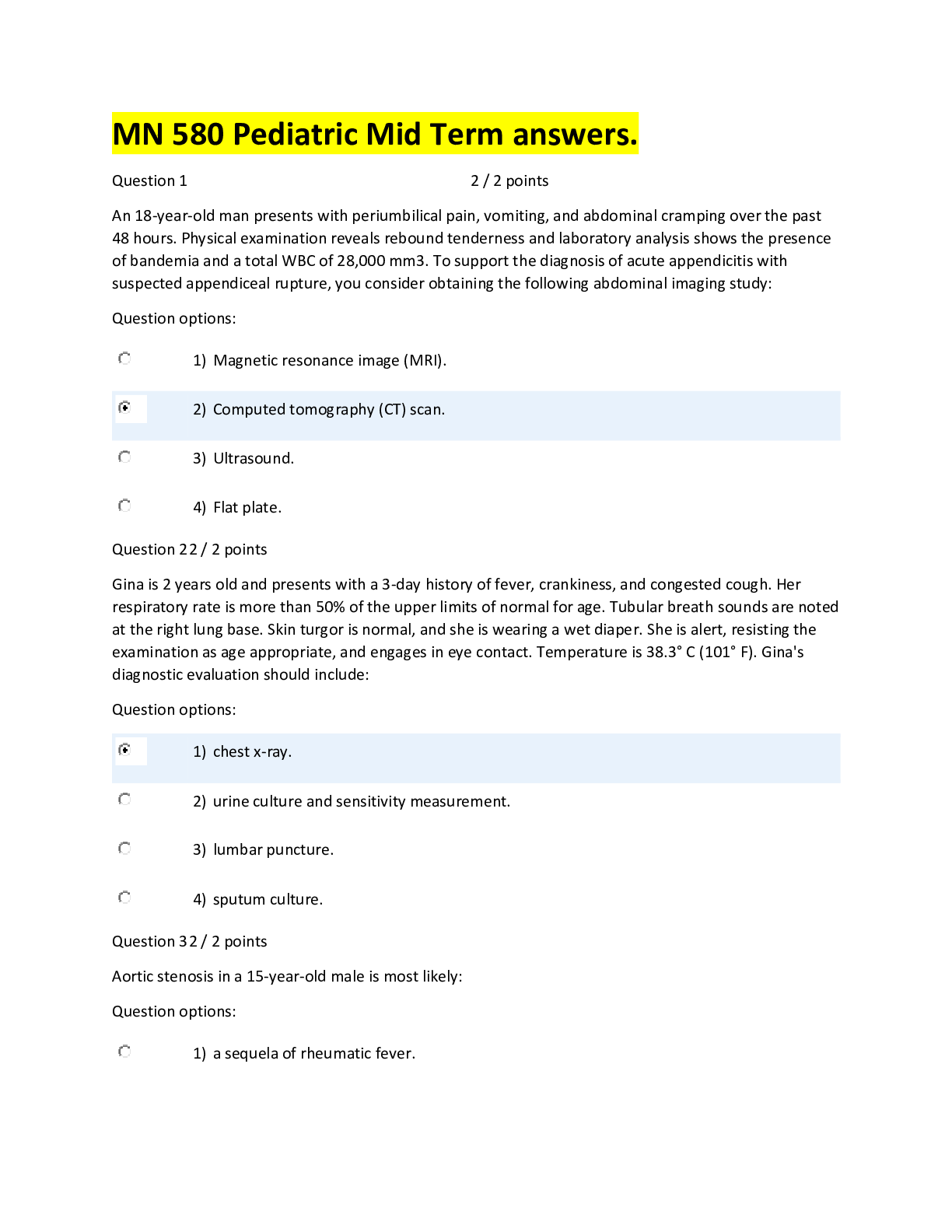
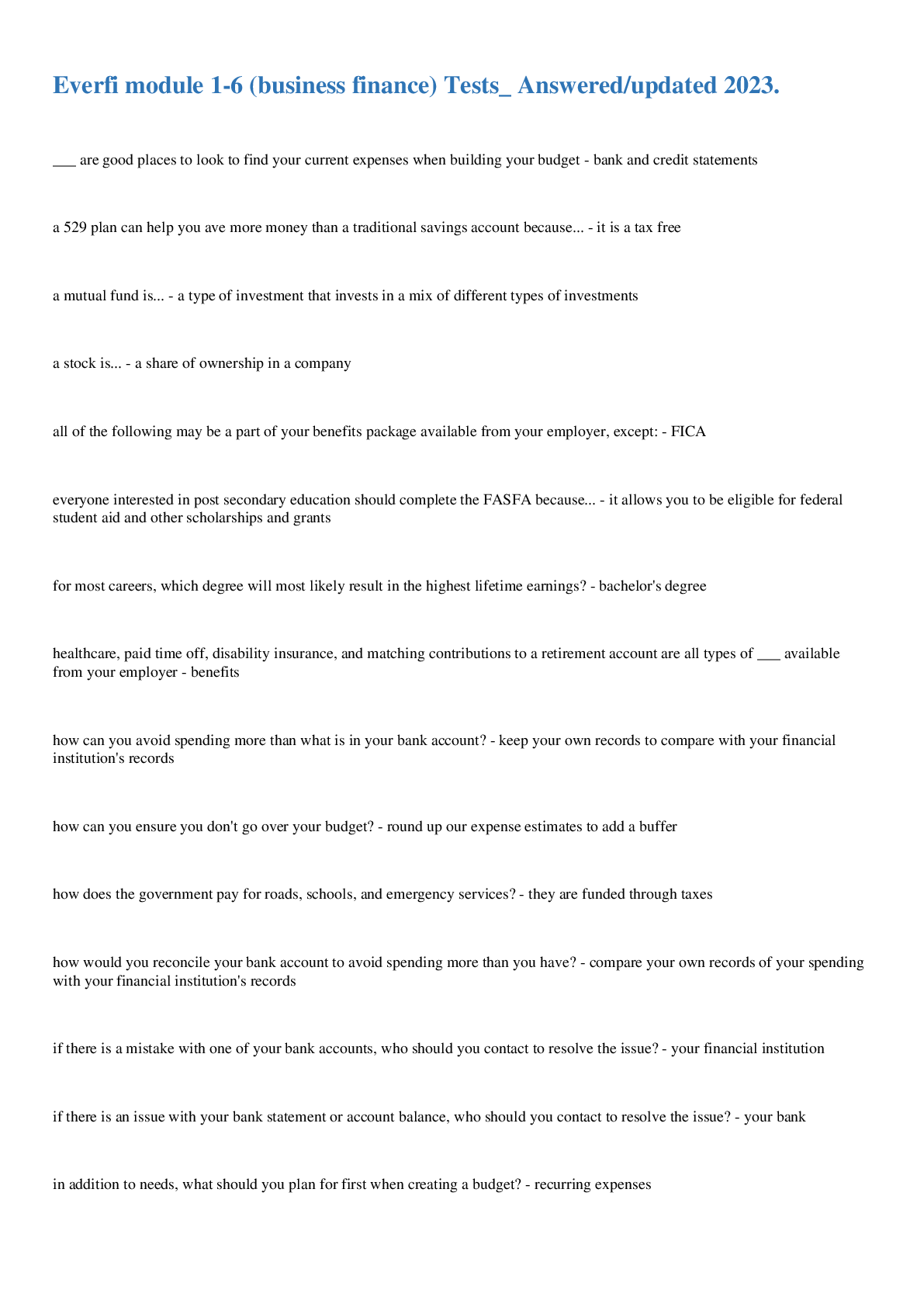

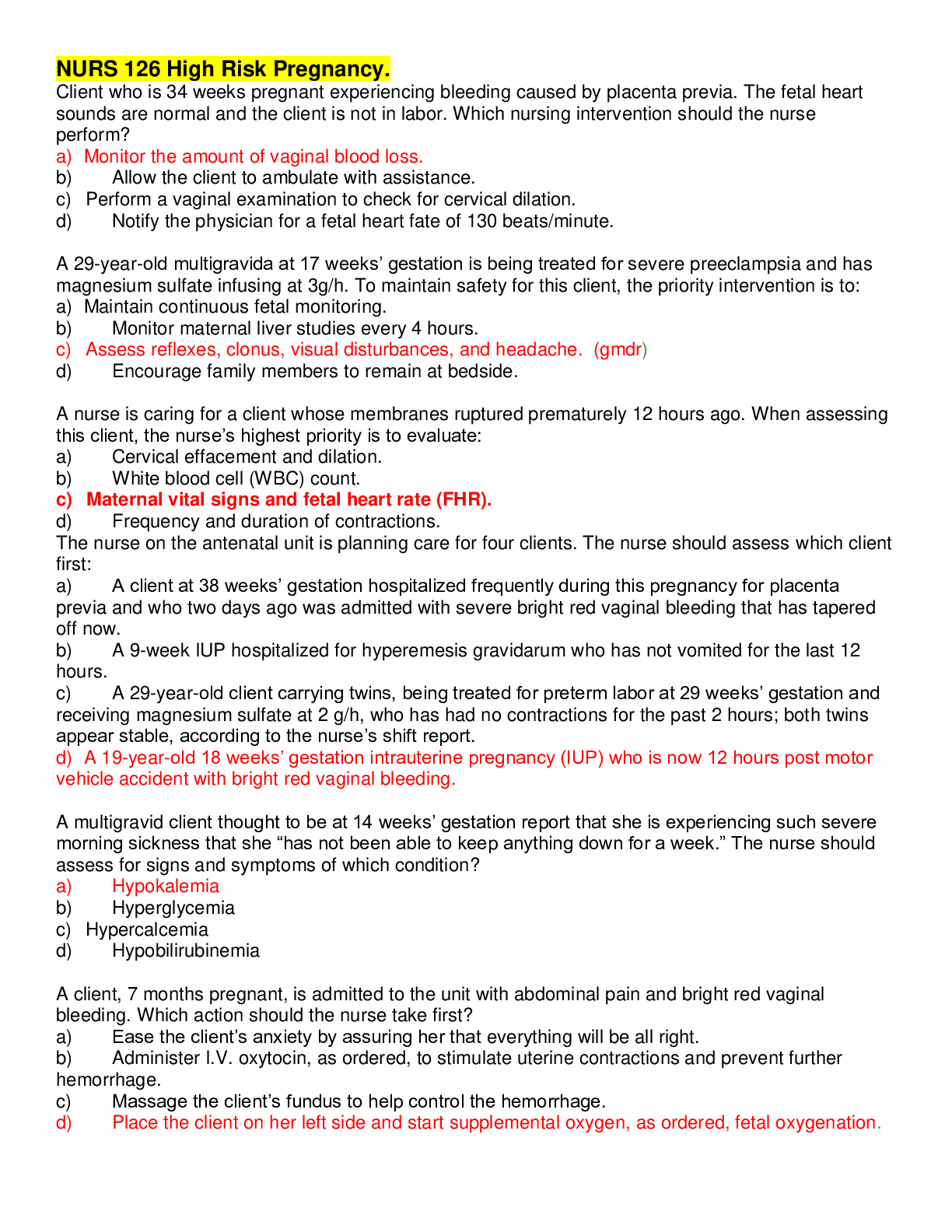


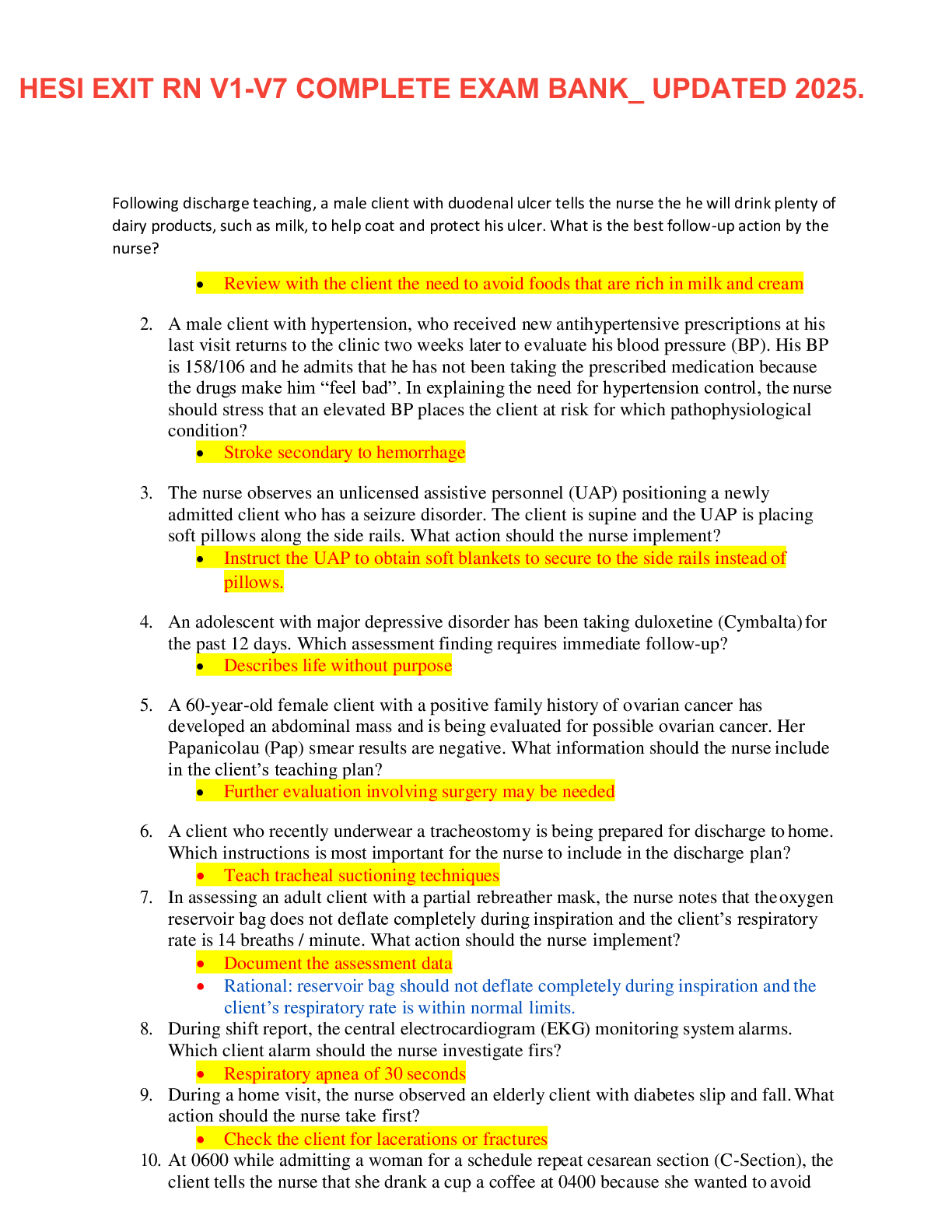
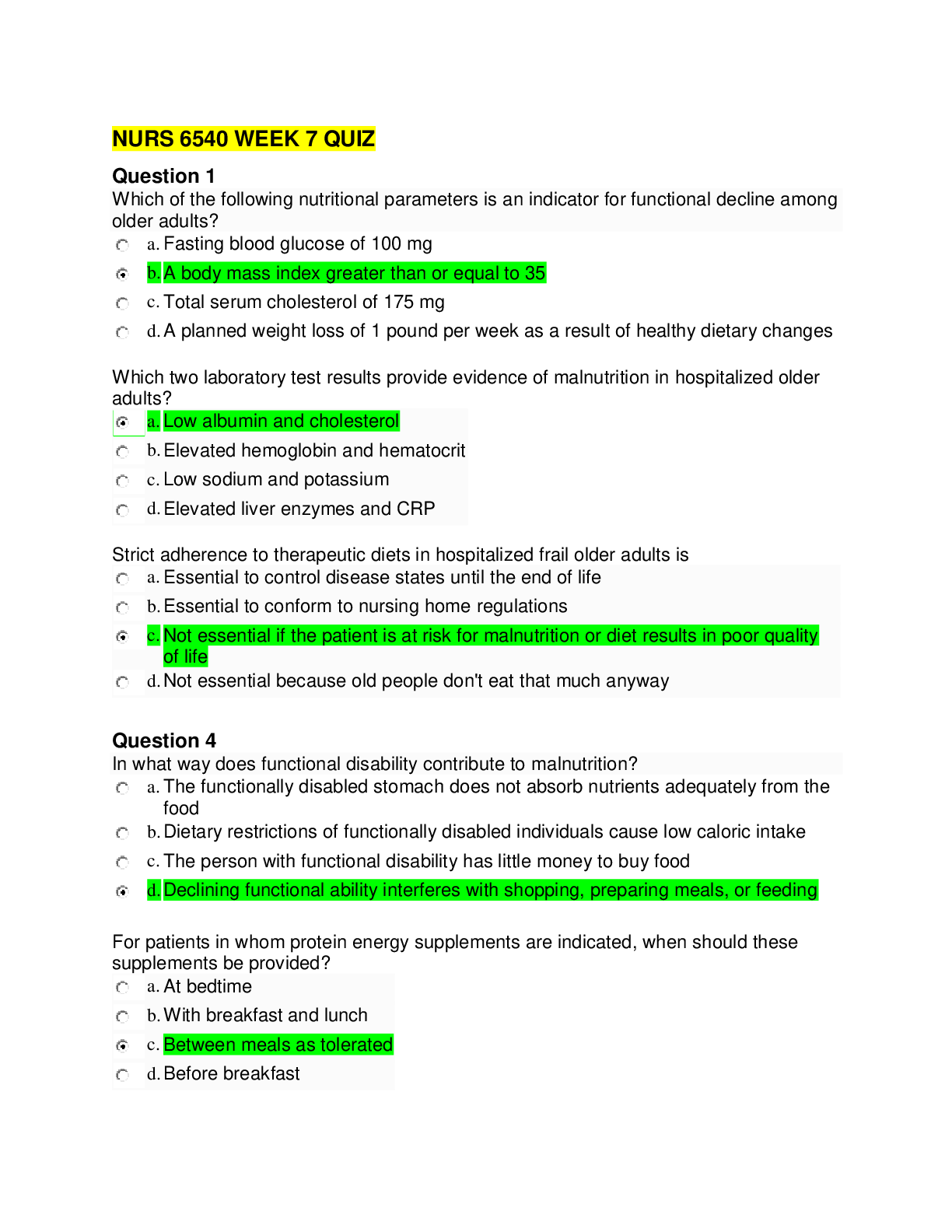
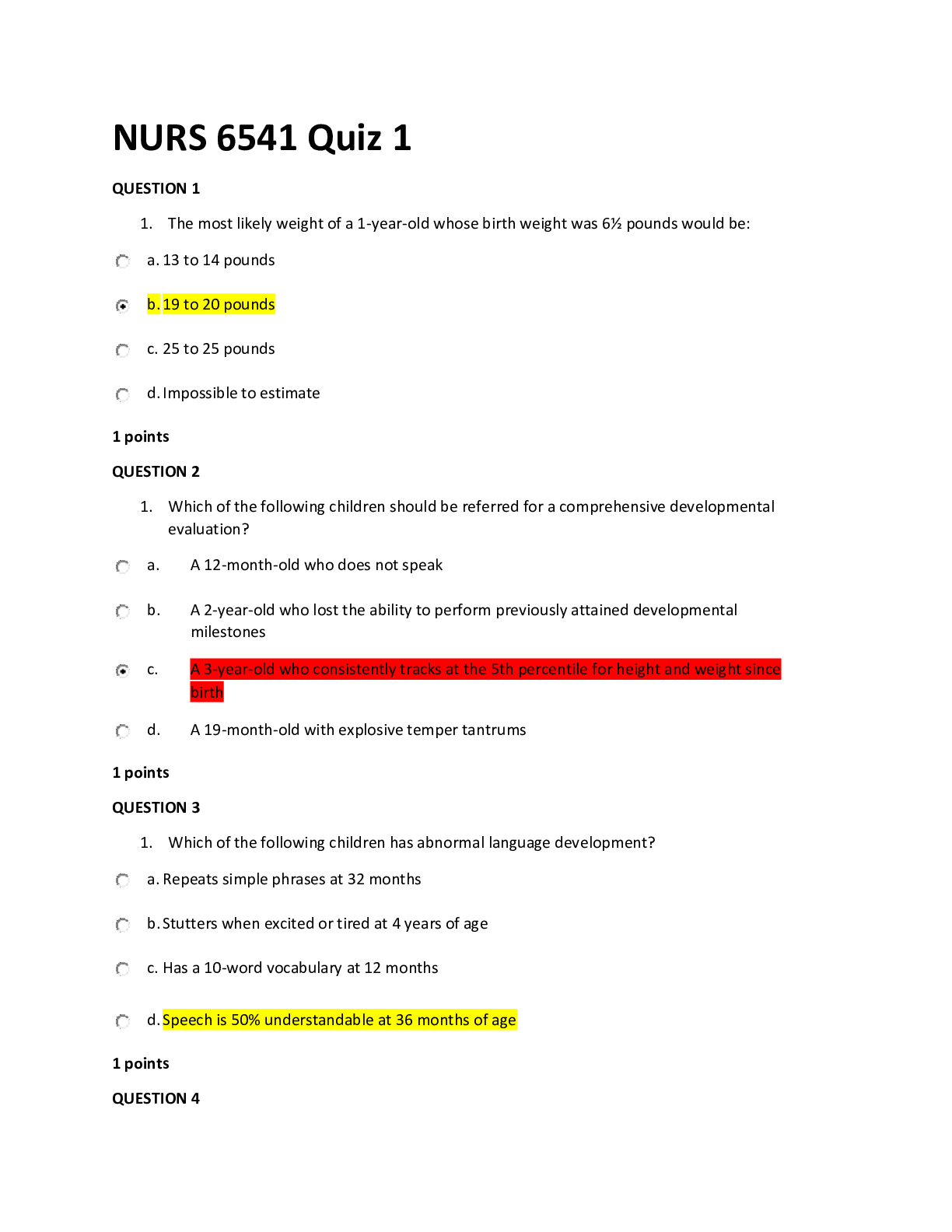
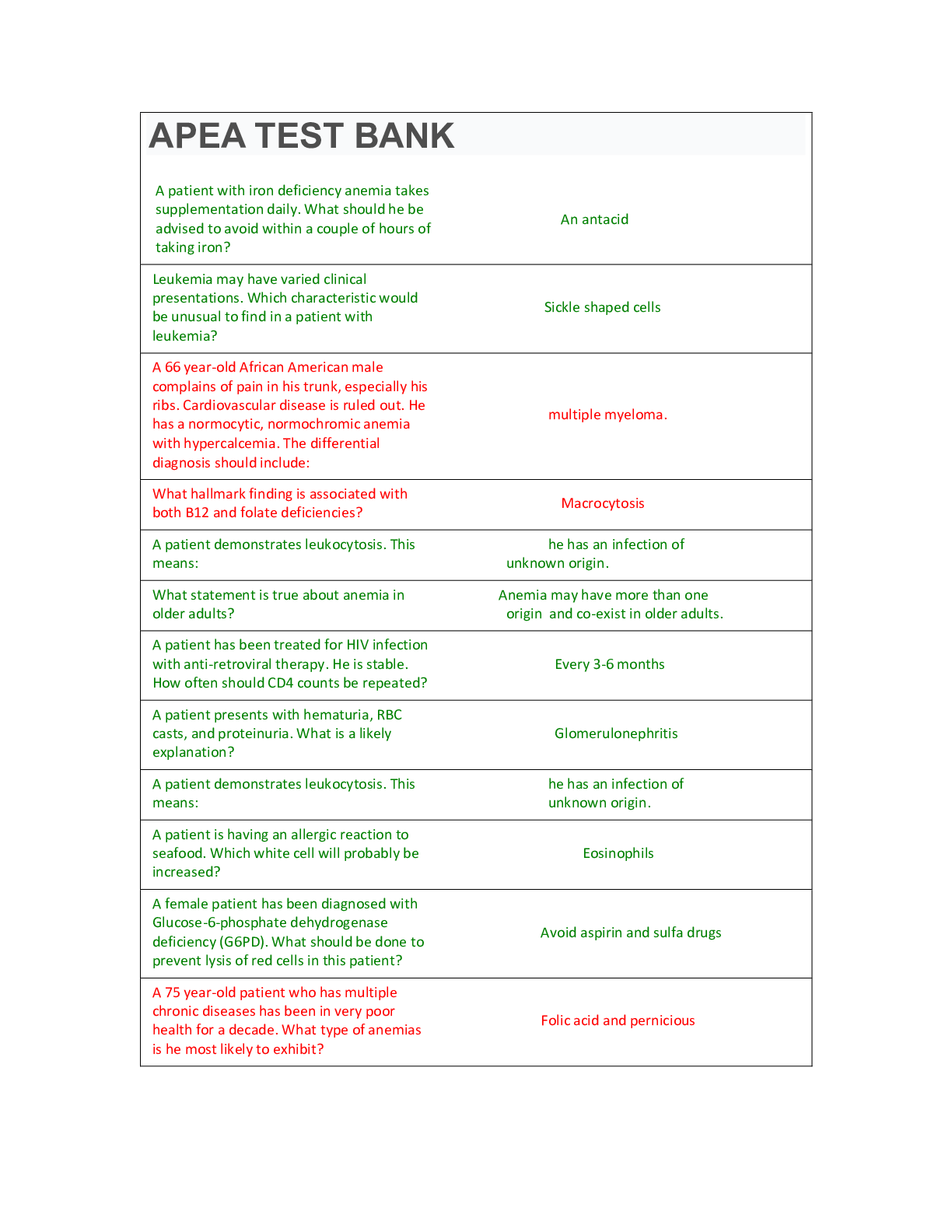
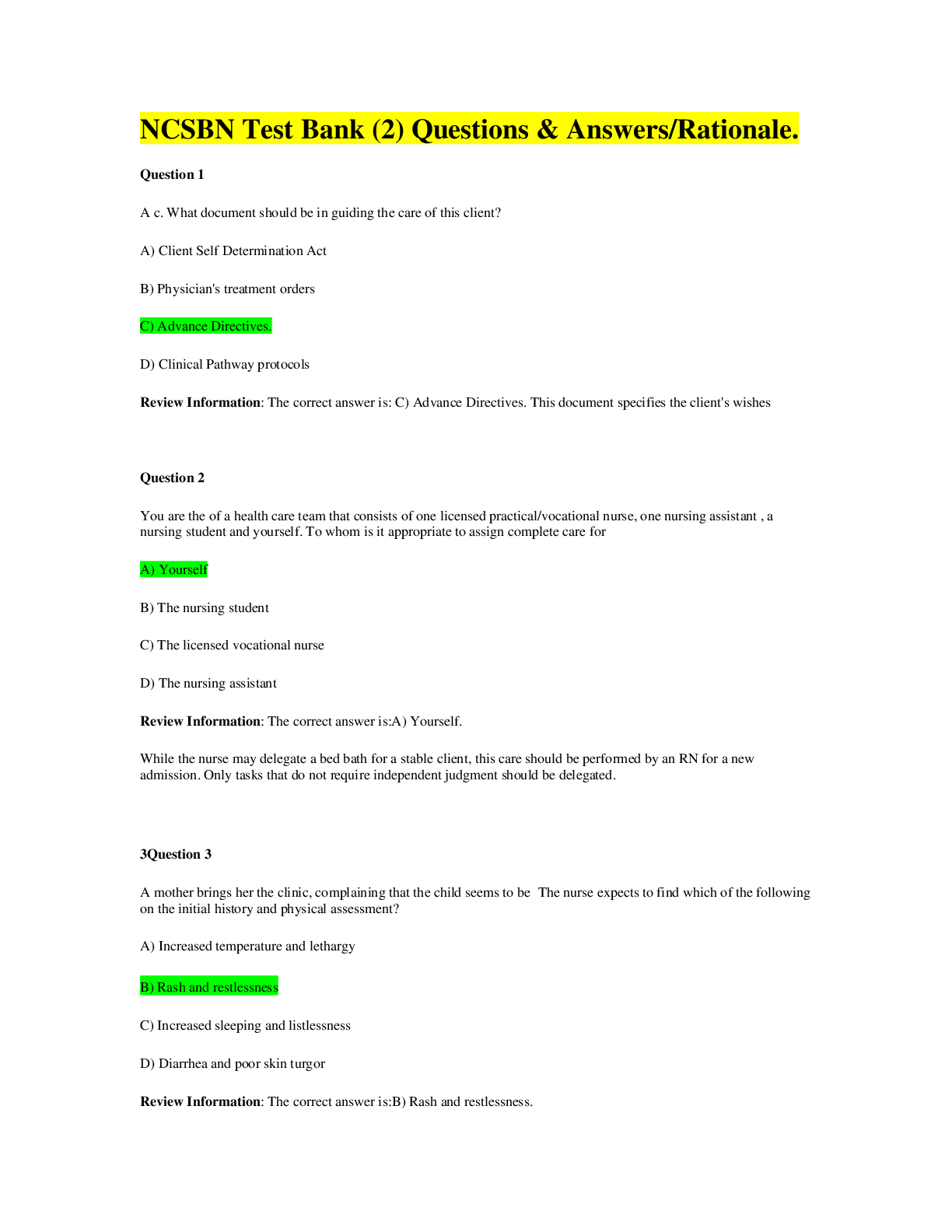
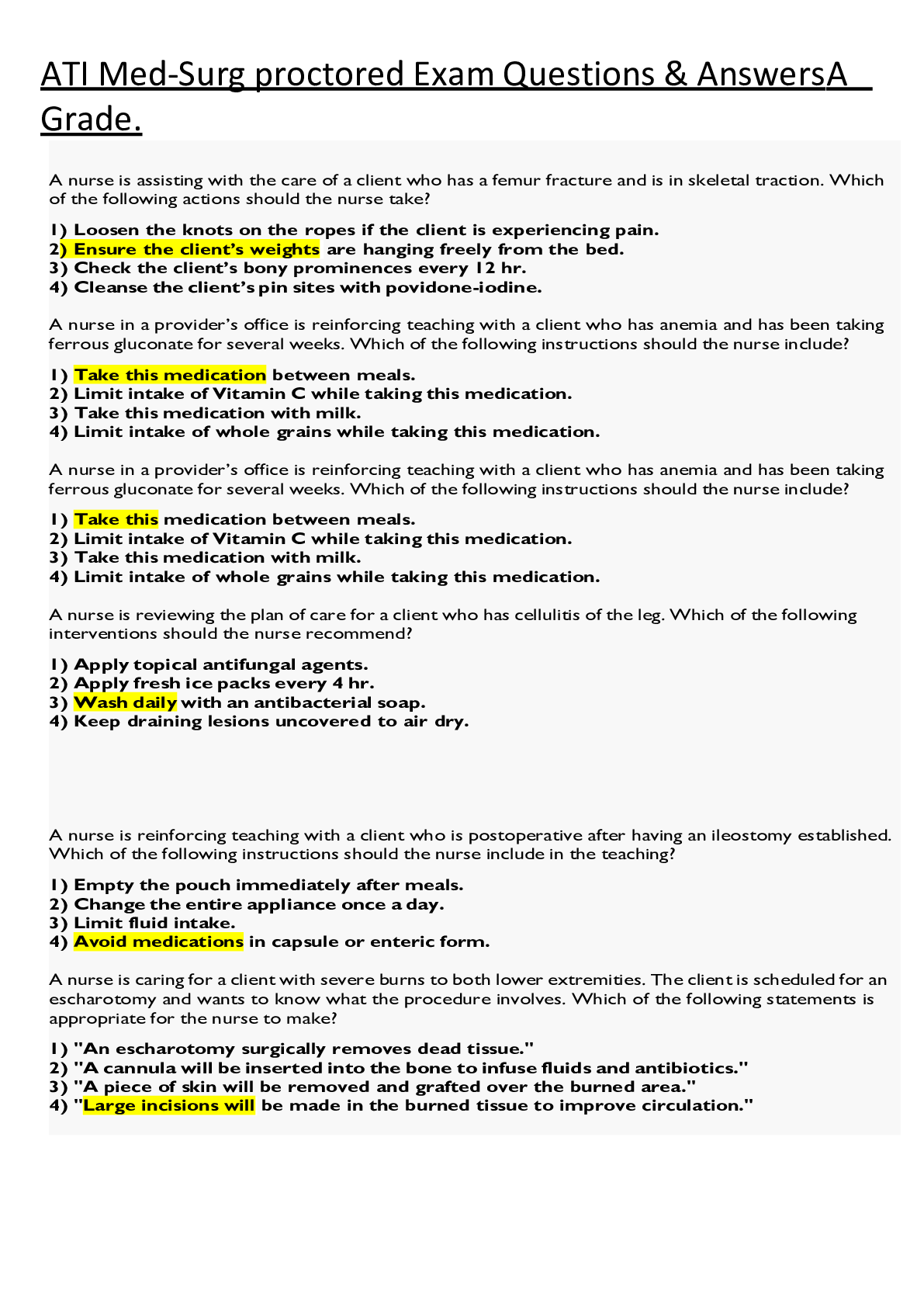

 (A Grade), Questions and Answers, All Correct Study Guide, Download to Score A.png)


